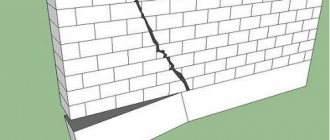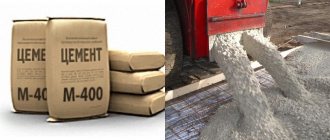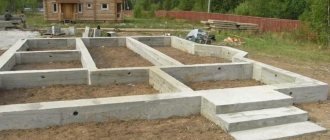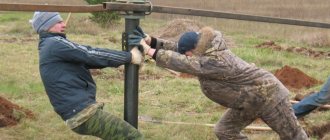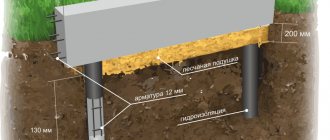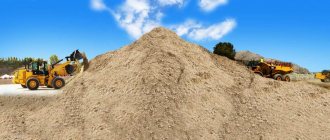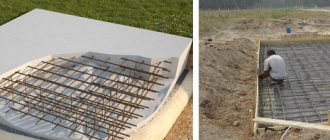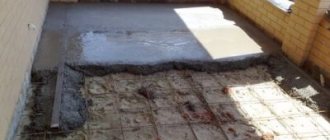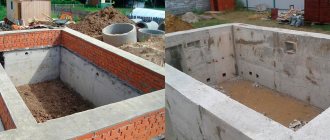May 31, 2020 Stroyexpert Home page » Foundation » Types and types
Foundation on clay soil
You can easily and simply build a house only on paper. In fact, construction is a very important and responsible process in which each stage requires a lot of attention, effort and time. When constructing a residential building, the correct choice of foundation is of great importance. The strength and durability of the entire structure depends on this.
Before choosing the type of foundation for a house, it is necessary to carefully study and analyze the soil at the construction site. Based on the research carried out, the bearing capacity of the foundation is calculated. In most regions of Russia, clay soil predominates, therefore, it is necessary to talk in more detail about the features of building a foundation on this type of soil.
Clay as a natural material and its features
Clay soils come in different varieties. If the percentage of pure clay in the soil ranges from 5 to 10, then we have sandy loam . Loam is the name given to soils containing 10-20% pure clay . And if it is more than 30%, then the soil is called “clay”.
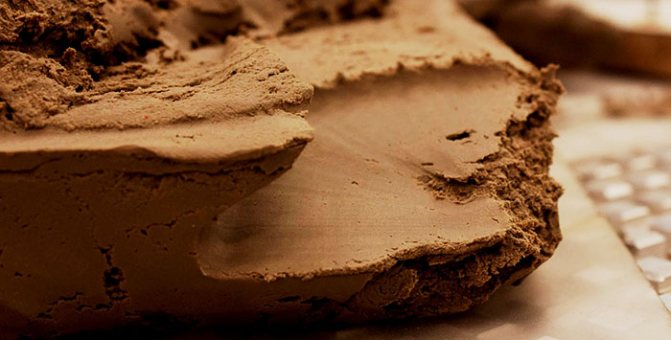
The main feature of clay is the ability to quickly erode under the influence of water, without letting it penetrate deeper. Layers of clay can lie at sufficient depth, and water that penetrates them freezes and swells the soil at low temperatures. Therefore, clayey soils are called heaving soils, and before starting construction it is strongly recommended to conduct studies of the composition and homogeneity of the soils on the site . Otherwise, the clay may behave unexpectedly, quite quickly turning a buried foundation into an above-ground one.
In general, a distinction is made between river (alluvial) and glacial clays. The first lies near reservoirs, in lowlands and has high plasticity. Construction on such areas is contraindicated, and in exceptional cases houses have a pile foundation. Concrete foundations can be confidently erected on glacial layers, but only if they are deep.
Return to content
Types of soil mixed with clay
- Clay refers to soil in which at least 30% clay predominates.
- Loam is characterized by no more than 10% clay in the soil.
- Sandy loam contains from 5 to 10% clay.
There are also glacial clay and alluvial clay. The first type of this material is characterized by excellent load-bearing capacity. It is characterized by high strength under significant concrete loads.
But this ability is preserved only if it is deep.
Alluvial clay can be found near bodies of water. Due to its high plasticity, one should refrain from building on this site. It is not suitable for a foundation. Otherwise, it may soon float, which will cause cracks on the walls of the house.
As a last resort, building a house on stilts is allowed.
Choosing the right foundation
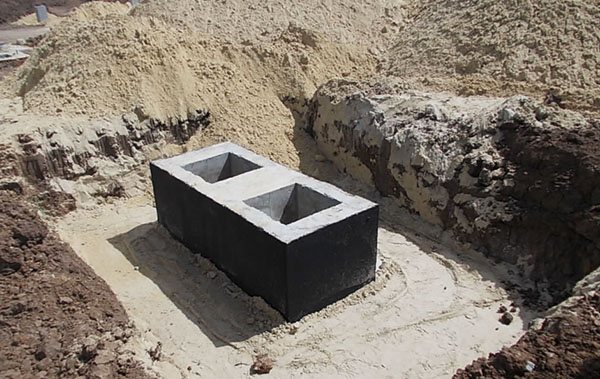
On clay soil, you can build your absolutely favorite type of foundation; everything depends only on the specific site and the capabilities of the developer.
Regardless of the type of foundation chosen, on clay soils it is recommended to perform backfilling: excavate the soil under the entire area of the foundation and fill it with sand or crushed stone . The procedure is expensive, but increases the strength and reliability of the building, especially in areas with long periods of low temperatures.
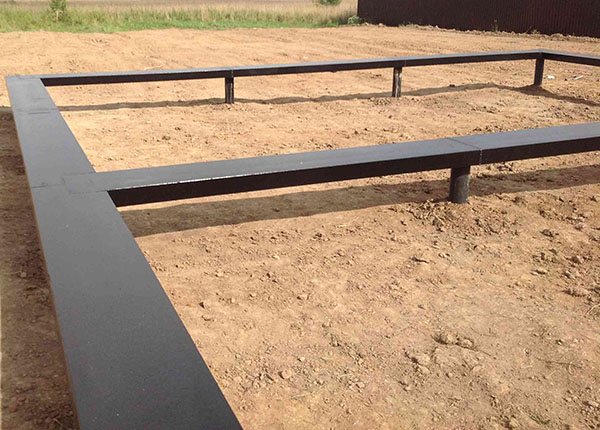
So, the choice of foundation is based on clay content and soil freezing depth , as well as on the value of the groundwater horizon. If groundwater is located above the freezing level, then even before laying the foundation, it is necessary to create drainage trenches around it.
The foundation for a house on clay soil can be:
- ribbon , deep (especially in regions with low temperatures);
- slab shallow;
- pile.
Return to content
Pilewort
At the design points, piles are driven until they reach dense layers of soil. In some cases, due to special conditions of the soil, pile bushes are made (piles from one point diverge downwards in different directions) or hanging piles are installed (posts are driven in at an angle, ensuring stability due to lateral friction against the soil base).
The upper ends of the piles are tied either with a metal profile or with reinforced concrete beams or slabs. The most reliable and durable option for supporting a house is a grillage made of a monolithic slab on piles.
Strip foundation on clay soil
For the construction of country houses on sandy loam and loam, with deep groundwater, you can lay a strip foundation. On clay soil, this will be a monolithic reinforced concrete strip under all external and load-bearing walls , as well as under the heaviest sections of the future structure. This is the only possible option if the house is supposed to have a cellar, underground garage or basement.
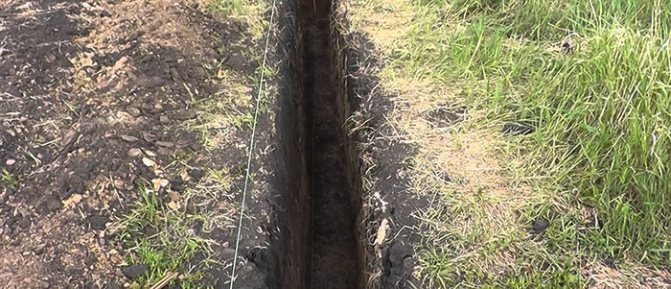
After transferring the markings from the plan to the “real life”, a pit is dug along the stretched signal strings, the depth of which is greater than the freezing level of the clay soil. In regions with cold climates it can be 1.5 meters. The bottom is carefully leveled and covered with layers of crushed stone (10-15 cm) and sand (the deeper the ditch, the thicker the sand layer) . The walls of the trench are laid with waterproofing film or roofing felt.
The width of the pit is calculated as the thickness of the walls with finishing, plus 10 cm for the blind area and 30% for the base of the foundation . Concrete solution is poured into the bottom of the pit in a layer of 3-5 cm (this will be the base), and after hardening (about 14 days), formwork and reinforcement tied into meshes are installed.

Developments in construction technology have made it possible to use more expensive but higher quality permanent formwork . It additionally insulates and protects the foundation from displacement.
Concrete is poured continuously, in parts of 15-20 cm, with the obligatory compaction of each layer. After 28 days, the concrete gains full strength and the formwork can be removed. The finished foundation is coated or sprayed with waterproofing materials , and if it is left to shrink for the winter, it is carefully covered .
Advantages:
- Sufficiently high load-bearing capacity.
- Durability (75-150 years).
- Possibility to build a basement or cellar.
Flaws:
- Great labor intensity.
- High costs for materials, and therefore the total cost of the foundation.
- Use only on loams and sandy loams, and in a deep-buried version.
Return to content
Strip base device
The main advantage is the ability to fill it in any soil with deep groundwater. The main disadvantage is the laboriousness of the process.
The laying technology involves the following stages of work:
- leveling the area;
- removal of topsoil;
- marking works;
- digging a trench around the entire perimeter;
- creating a sand cushion;
- installation of formwork;
- laying of reinforcement;
- pouring concrete into formwork;
- leveling the screed;
- strength gain (within a month);
- removal of formwork.
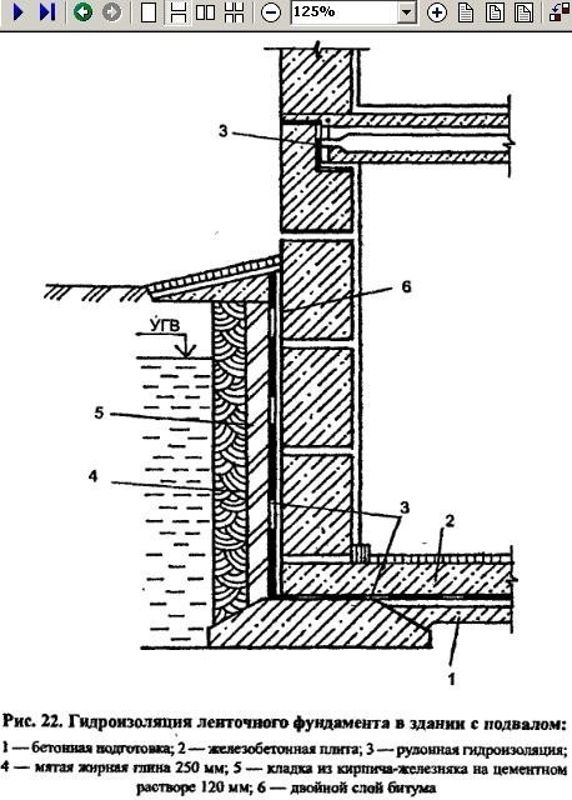
Scheme of waterproofing strip foundation.
When laying a strip base, a trench is dug to a depth of 50-70 cm. Pouring concrete into the trench involves creating a monolithic strip 30-50 cm wide and 50 cm high, which is located on a sand bed. Whatever type becomes the basis for the future house, its mandatory element is a cushion of sand, gravel or crushed stone. Moreover, the bottom of the base should exceed the top by at least 25%.
The sand cushion should be made as wide as possible. This will improve its shock-absorbing properties and remove excess moisture from the foundation. The sole should also be made wider than its upper part. This will reduce the load from the soil. All edges of the base are filled with sand and compacted.
From the outside, it is recommended to cover the base of the house with waterproofing materials that have high strength. This will prevent:
- sticking to clays;
- soil displacement during freezing.
It is also necessary to insulate the soil around the base. The most common method is to install a blind area, which will also save the foundation from premature destruction.
The reliability and strength of the structure can be improved by making special joints. They are support piles that are placed below the freezing level of the soil. They are installed around the perimeter every 2 m.
Slab foundation
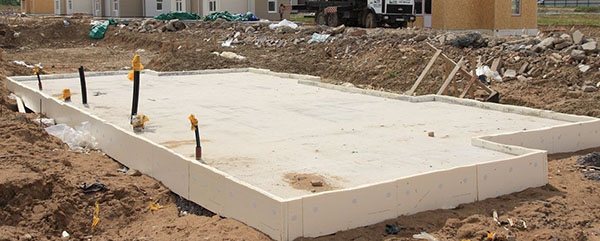
Another name for this type of foundation is “floating” slab . This is an excellent option for clay soils, since the weight of the house is evenly distributed on the reinforced concrete foundation, and when the soil is washed out or moves, the entire slab will shift, and not its individual parts.
The concrete slab itself has a slight recess (depending on the weight of the future house), but it does not lie on clay soil, but on a sand and gravel substrate.
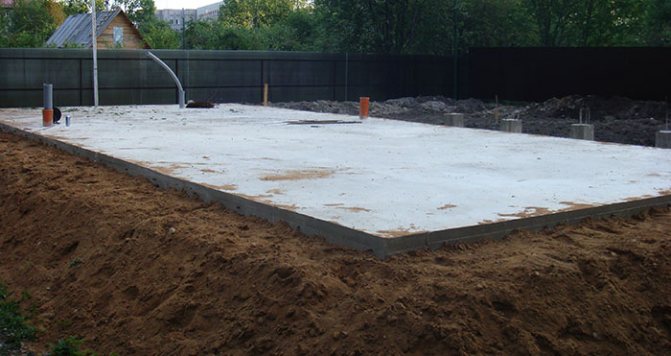
Under the entire base area, soil is removed to a depth exceeding the thickness of the slab by 30-40 cm . If the groundwater level is high, a drainage system of pipes is installed with a slope from the foundation. Now, the base can be covered with sand and thoroughly compacted or filled with “skinny” concrete . Formwork is installed along the perimeter of the foundation and its interior is covered with waterproofing film or roofing felt. The reinforcement bars are tied into a mesh, mounted in formwork and filled with concrete mortar filled with fine gravel. Filling is carried out in the shortest possible time , “at one time”. Moreover, it is better to fill one layer over the entire base area on one day and finish it the next, than to fill the entire height in parts.
Pros:
- Resistance to subsidence and erosion of soil, as well as seismic phenomena.
- Durability (up to 150 years).
- During the construction process, you can change the original layout of the house without additional changes to the foundation.
Minuses:
- Expensive materials and excavation work.
- The complexity of the process.
- Impossibility to build a basement without additional work.
Return to content
Monolithic slab
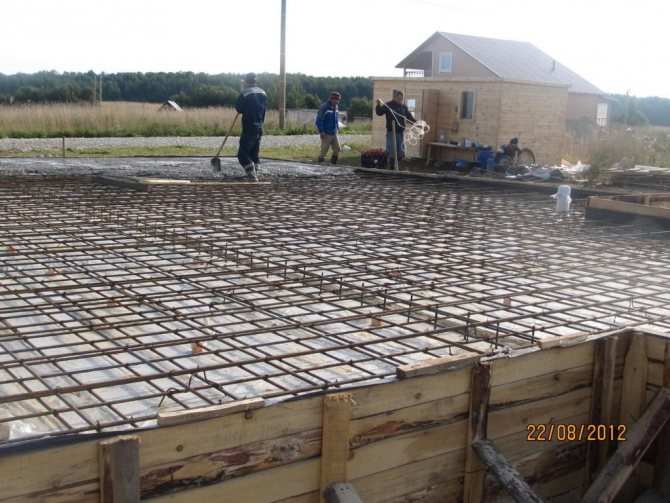
Monolithic reinforced slab is the most expensive option for supporting a house. It is made from concrete grade no lower than 300. The depth of the foundation slab depends not only on the freezing of the soil and groundwater, but also on the total weight of the structure.
The reinforced concrete monolith creates the effect of a floating slab. This gives independence from any shifts in the clayey base.
Work on the installation of a sand and gravel cushion, waterproofing, formwork, reinforcement and concrete pouring is carried out in the same way as during the construction of a strip foundation.
Pile foundation on clay soils
The most optimal foundation for clay soil is a pile or pile-tape (pile-grillage). By varying the size of the piles, you can reach the depth of hard soil that is not subject to freezing and erosion by groundwater, and build a solid foundation for the house.
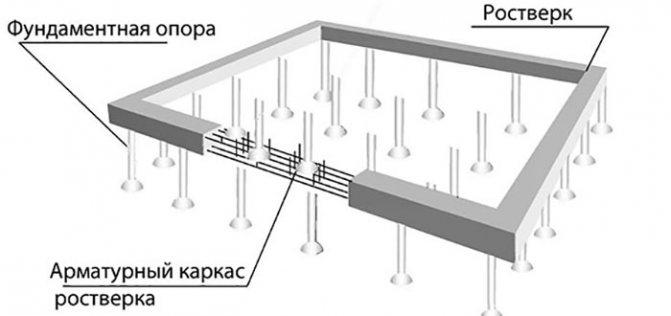
, the load it will carry is determined for each pile . Depending on this and the installation depth, screw, driven or bored piles are chosen (for relatively shallow depths).
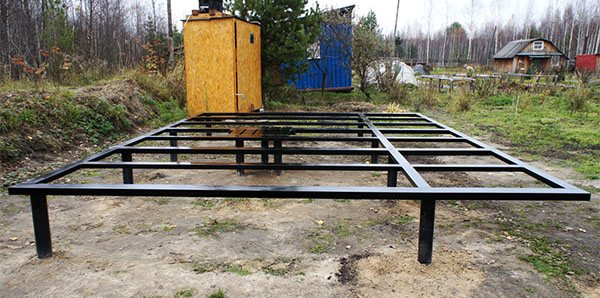
Iron screw piles are screwed into the ground using special levers (you can do it yourself) , and driven piles are installed using special equipment. Bored ones are reinforced reinforced concrete supports created directly on the site. First, a well is drilled, then water is pumped out of it, and a sand cushion is filled in. Pipes are installed into the hole, which are then reinforced and filled with concrete. The complexity of pouring at great depths somewhat limits their use.

For a country house, piles are installed in a row under the external and load-bearing walls. If columns are planned for the house, a pile “bush” . If a heavy structure is planned, the pile foundation is made in the form of a field with uniform rows of installed piles. A reinforced concrete beam (less often a slab) is placed on the piles, the main task of which is to tie the entire foundation into a single whole, evenly distribute and transfer the load from the weight of the building to the ground .
Advantages:
- Durability (200 years).
- Ability to withstand heavy loads and vertical deformations.
- The financial investment is less than for the construction of a strip monolith.
- Relatively high construction speed.
- Possibility of reusable use of piles.
- Installation at any time of the year.
Weaknesses:
- Impossibility of arranging a basement without additional work.
- The need to use special equipment.
- Individual elements of the pile are susceptible to corrosion.
Return to content
What determines the choice of foundation
Having determined the type of soil, it is necessary to find out the depth of groundwater and soil freezing. The choice of foundation type will also be affected by what material the house will be built from, that is, what load is planned on the foundation. Regardless of the parameters described above, remember - the base of a clay foundation must be at least 25% wider than the top part. This will save your structure from subsidence and deformation. A bed of gravel, crushed stone or sand is also required. On clay soils, a slab, strip, columnar or pile foundation is erected. The choice of each of them depends on several components.
- Price. The most stable and reliable is a slab foundation; experts most often recommend it for installation on complex and difficult to predict clay soil. But in most cases it is also the most expensive. Based on these features, slab foundations are erected for heavy stone buildings. On the other hand, a recessed strip foundation for houses with a basement will cost even more than a slab foundation. But on clay soils, pile and columnar foundations for a house with a basement are excluded. Therefore, there is practically no choice left. However, if the house is light and without a basement, then the situation changes and a relatively cheap foundation on piles, buried below the freezing line of the soil, will be the best solution.
- Layers of pure clay can lie evenly or alternate with other soils. Before construction begins, it is necessary to survey the site. This is done by drilling wells or digging pits to the depth of soil freezing. If the composition of the soil varies significantly in different areas, the foundation base is covered with crushed stone and sand. You can also install a pile foundation, the base of which should reach a dense layer of clay.
- On heaving soils, the foundation must be selected based on the weight of the house. If the load is expected to be high and the area of the foundation base is large, a reinforced slab is preferable. If the weight of the structure allows, experts recommend choosing between a strip or pile-grillage type of foundation.
- Consider the depth of groundwater. Clay is an excellent natural waterproofing material. At the same time, at depth it remains wet all the time. If the groundwater level is high, you will have to choose between a monolithic slab or a pile foundation. A strip foundation will not work in this case. If the groundwater table is deep, a clay foundation can withstand a significant load.
- The depth of soil freezing is directly related to the depth of groundwater. The higher the water level and the greater the depth of soil freezing, the higher the complexity and cost of building a foundation.
- On an uneven site, you can reduce costs, reduce labor intensity and increase the reliability of the structure through the use of pile supports. They are also recommended for difficult soil, in which clay and other types of soil are mixed with stone.
Clay soil has not only disadvantages, but also advantages. The correct choice of foundation type will allow you to level out the shortcomings and use the advantages to strengthen the structure. If your site has clay soil, do not take risks and do not build the foundation yourself, but entrust this task to professionals.
conclusions

As you can see, the depth of the foundation on clay soil directly depends on the clay component, the level of freezing and occurrence of groundwater, as well as the weight of the structure . During preparatory work for construction, it is better not to skimp on measures to study the composition of soils on the site. This will help you understand which foundation is better on clay soil in each specific case, because the price of the issue is the reliability and durability of a country house for many years.
Specifications
According to the fluidity index, GOST 25100-95 divides loams into:
- solid IL < 0;
- semi-solid 0 ≤ IL ≤0.25;
- rigid 0.25 < IL ≤ 0.5;
- soft plastic 0.5 < IL ≤ 0.75;
- fluid-plastic 0.75 < IL ≤ 1;
- fluid 1 < IL..
Basic properties:
| Characteristic | Unit | Index |
| Density | t/m³ | 0,21…0,24 |
| Conditional dynamic resistance | MPa | 0,36…0,67 |
| Porosity coefficient | e | 1,97-1,98 |
| Deformation modulus, E | MPa | 147 |
The density of loam may differ from that given. The parameter is mainly determined by terrain conditions:
- availability of groundwater;
- climatic features;
- various impurities in the total sample volume.
In damp swampy areas, significant soil compaction occurs; in dry areas, the soil is looser and more fertile, suitable for agriculture.
The specific gravity of loam depends on the density, its average value is 2.71 t/m³. This value is taken into account when calculating the bearing capacity of the foundation.
Another important property that is determined during geological research is the filtering capacity of soils. This parameter shows how quickly rainwater will leave the formation or, conversely, be retained in it. The filtration coefficient of loam is in the range of 0.005...0.4 m/day.
Self-soil analysis
The optimal time for geological exploration is spring.
After all, it is during this period that groundwater is as close to the surface as possible. They can complicate construction work and even force you to reconsider your original foundation choice. Several wells will need to be drilled in the area where the house is planned to be built. This can be done conveniently with a garden drill. The drilling depth is at least 30 cm from the soil freezing line. In the process, you can immediately evaluate and determine:
- soil composition;
- bedding levels and their uniformity;
- soil characteristics.
Types of foam block foundations
- Tape;
- Monolithic;
- Columnar;
- Pile.
These are variations in the arrangement of the foundation, based on the use of foam blocks. Note that one of the most rational and correct decisions is to create a high-quality strip foundation, which can be:
- Reinforced concrete;
- Recessed;
- Shallow.
It is quite obvious that before laying the foundation, the area will need to be cleared. Next comes the planning process. If you find moles on the territory of a land plot, you can find out how to deal with them on the website
Columnar foundation
One of the most rational solutions is the use of a columnar foundation, which is based on high-quality materials, as well as on an additional reinforcing belt made of durable reinforcement. Such a foundation can last quite a significant amount of time, while for clay soil, a columnar foundation is the most rational and correct solution.
Pile foundation
Among the many variations of foundation arrangement, the pile option can be considered the most unique and correct. The whole point is that a pile foundation can be installed on any soil, while obtaining high quality, prospects for endurance, strength and reliability.
Today, many unique methods of arranging this type of foundation have appeared based on the use of the following piles;
- Rack piles;
- Screw piles;
- Hanging piles;
- Piles with reinforced concrete grillage.
Measures to reduce heaving in the area
Loam cannot be heated, because it contains clay, which makes it wet. And in the cold season, water expands when it freezes. Implementation of 5 measures will significantly reduce this indicator:
- A drainage system is formed along the entire perimeter of the building.
- Formation of the blind area of the building.
- Insulation of the blind area of the house.
- Installation of roof drainage and drainage system. Definitely going into the storm drain.
- Complete replacement of soil with a sand base before erecting the frame.
Watch a video on how to make soil drainage on your site:
